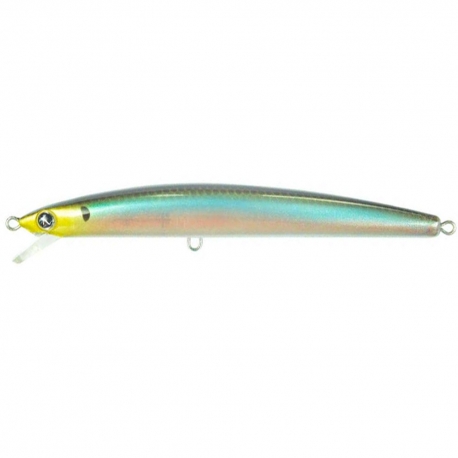- Weight
- 12 gr.
- Typology
- Jerk
- Fishing technique
- Spinning
- Action
- Slow Floating
- Pack of
- 1 piece
- Model
- Mommotti 115 SF
- Series
- Mommotti
- Measure
- 115 mm.
- Spinning on eels
- No
- Sinking
- 0 - 60 cm.
- Internal sound system
- No
- Moving ball balancing
- Yes
- With hooks/anchors
- Yes
- Anchors / hooks size
- 2 anchors N.6
Prodotti alternativi
Product Details
Description
Tested in the tank before marketing. Sinuous and irresistible swim with flash and maximum jerk control. Great casting accuracy and stability, even upwind, due to its balance. Captivating for a large number of predators. Equipped with Dynamic Center of Gravity (D.C.G.). Description The Mommotti 115SF is a latest-generation jerk with slow floating action in the break, this allows it to make the most of the "strike zone," remaining in semi-suspension for a predetermined time before setting off again in ascent, it attracts the curiosity of the predator who calculates its timing by anticipating and forcing its attack. The secret of its great attractiveness, which has made it one of the world's most popular jerks in the marine sphere, lies precisely in the calculation of these action times. The whole design of the lure has been restudied for the fresh water version. It is the smallest specimen in the Mommotti series. The sinuous swim that distinguishes the larger models seems to find perfect fulfillment with its smaller size. The Mommotti 115 SF has an "extra gear" thanks to an internal construction detail that the other models in the series do not have and that we have called Dynamic Center of Gravity or in acronym DCG (Dynamic Centre of Gravity). What is the Dynamic Center of Gravity (DCG)? The DCG is an internal system, called Dynamic Baricenter or in acronym D.C.G. (Dynamic Centre of Gravity), which basically allows the Mommotti 115 SF to make more pronounced jerks than usual. Basically, with the DCG the internal moving spheres, which are normally locked in a very narrow space when the artificial is swimming, are free to move in a larger space and their backward displacement during jerks creates more instability in the attitude of the artificial, which in this way makes wider swerves.



